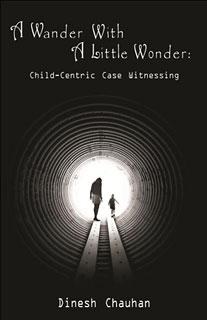BOOK CATEGORIES

The Theory of Chronic Disease according to Hahnemann by Dimitriadis
by Dimitriadis, George
$39.00
10 in stock (can be backordered)
MORE INFORMATION
Prologue It has always concerned me, that whilst I have been adequately able to defend all aspects of Homœopathy against the most intellectual criticism, I have not logically been able to defend the complete miasmatic theory of chronic diseases as held by most homœopaths even today. It concerned me greatly when listening to colleagues speaking upon miasms and their clinical application, since there were too many untestable assumptions which were simply handed down from teacher to receptive student, without proper reflection or investigation – one simply had to trust the endless opinions from one or another source. There was no single database, no fact. Whenever various teachers of the “miasm theory” (in its various forms) were closely questioned as to their database, they always failed to produce one, mostly admitting of their intrinsic trust in past ‘authorities’ on the subject. When I studied the writings of these authorities, I was still unable to uncover any real data, any concrete facts. It was out of my dissatisfaction with such transcendental speculations1 unsupported by real experimental or field data, yet which were so strongly held by my colleagues and teachers, and, out of my respect for Hahnemann, that I decided to critically review his writings from the beginning, without pre-conception or bias, and to understand the exact picture of his model of chronic diseases before I could accept or reject that model. It is indeed important for every homœopath to understand the evolution of the concept and morphology of the ‘Theory of Chronic Diseases’ from the time of Hahnemann, and the chronological changes given these entities by subsequent homœopaths through the years and up to the present. In this way, it has become apparent that Hahnemann’s ideas through his writings on this topic have been so convoluted and misrepresented that there is now much confusion within this whole area. This is indeed remarkable, given the very detailed and particular writings of Hahnemann on this subject, and the continuing misunderstanding and resultant misteachings evidenced within our profession must therefore stem from a failure to study Hahnemann’s writings, or a failure to observe carefully and reflect objectively on the results of practice, or both.2 As Stuart Close puts it:3 The great practical value of Hahnemann’s theory of the Chronic Diseases has never been fully appreciated because it has never been fully understood. This unfortunately, still holds true today, and, the reader is therefore asked to put aside their preconceptions and make an earnest attempt to approach this paper without bias,4 with the requisite focus and openness of mind for the sake of accurately gathering all the information presented before then drawing any definite conclusions. Such a study, coupled with one’s own reflections on experience5 in treating chronic diseases should more than suffice to clarify the real meaning and practical application of Hahnemann’s model.6 This work was originally compiled from lectures to my students at the Hahnemann Institute, Sydney (HIS) in 1989 and 1990 and from material presented in Sydney and Melbourne seminars during 1991, published in 1992. It is now again offered to the profession in this second edition – having been improved with many added references, re-organised and re-sized for better clarity – for the single purpose of highlighting the actual facts of Hahnemann’s theory on chronic disease, obtained through a study of his own writings, since there is no doubt that a clear understanding of the scope and application of this topic offers many rewards in the treatment strategy of all cases, both acute and chronic. It remains for me to thank my friends and close colleagues for their support towards this republication; to Bernhard Deutinger (Sydney) for his repeated encouragement that such work is still needed, and for his meticulous proof-reading of the manuscript and helpful suggestions, to my wife Jacqualine for her (as always) reasonable and valued comments throughout the review process, and to Greg Oosterbaan (Hamilton, NZ) for his valuable and thoughtful input which has helped to add clarity for the sake of the reader. Lastly, I welcome and encourage, as stated in the title to this work, an objective analysis and critical examination of the topic, for the sake of both our profession and patients. George Dimitriadis Sydney, Australia 30 April 2005 Organon §6 Francis Bacon observes it thus (Novum Organum [BNO], first book, §88): “Want of energy, and the littleness and futility of the tasks that human industry has undertaken, have produced much greater injury to the sciences: and yet (to make it still worse) that very want of energy manifests itself to conjunction with arrogance and disdain.” The Genius of Homœopathy [CGH], p.92 From Francis Bacon we read (BNO, first book, §97): “No one has yet been found possessed of sufficient firmness and severity to resolve upon and undertake the task of entirely abolishing common theories and notions, and applying the mind afresh… Francis Bacon (Novum Organum [BNO], first book, §82): “There remains but mere experience, which, when it offers itself, is called chance; when it is sought after, experiment.” Francis Bacon (BNO, first book, §84): “For truth is rightly named the daughter of time, not authority.”
RELATED PRODUCTS
Related products
-

Homeopathy Hippocratic Medicine by Mo Morrish
$24.003 In stock
Add to cart -

The Emerging Science of Homoeopathy by Bellavite & Signorini
$45.001 In stock
Add to cart -

Lectures on Homoeopathic Philosophy- Kent
$12.003 In stock
Add to cart -

Homeopathy – Beyond Flat Earth by Dooley
$25.002 In stock
Add to cart -

A Wander With a Little Wonder (Hardcover) by Chauhan, Dinesh
$108.001 In stock
Add to cart